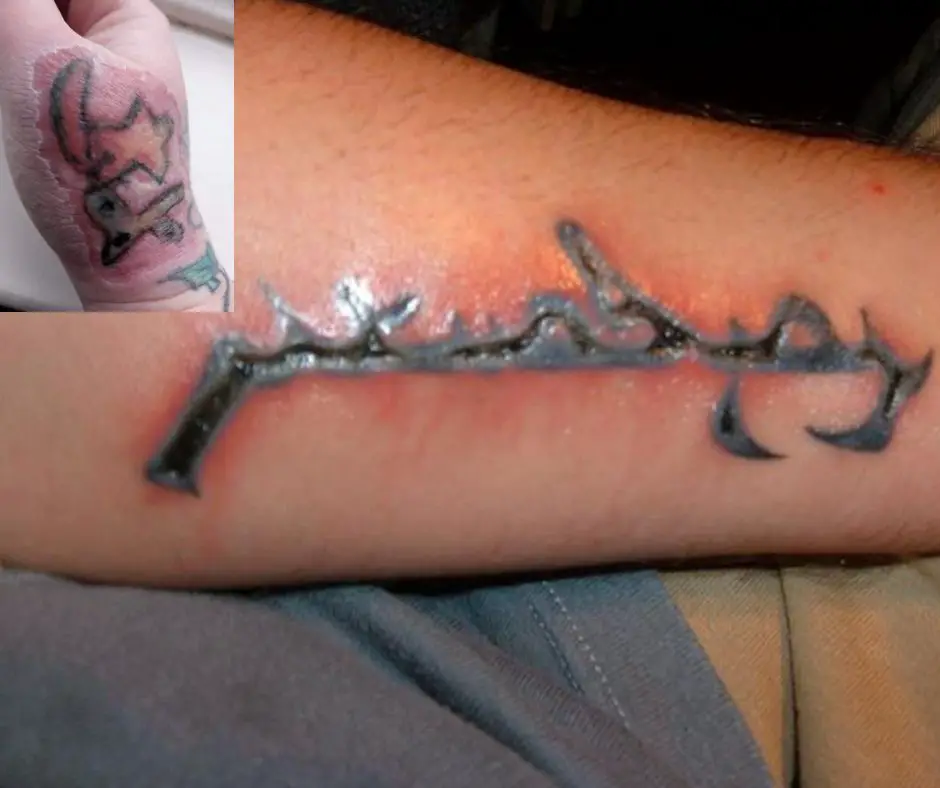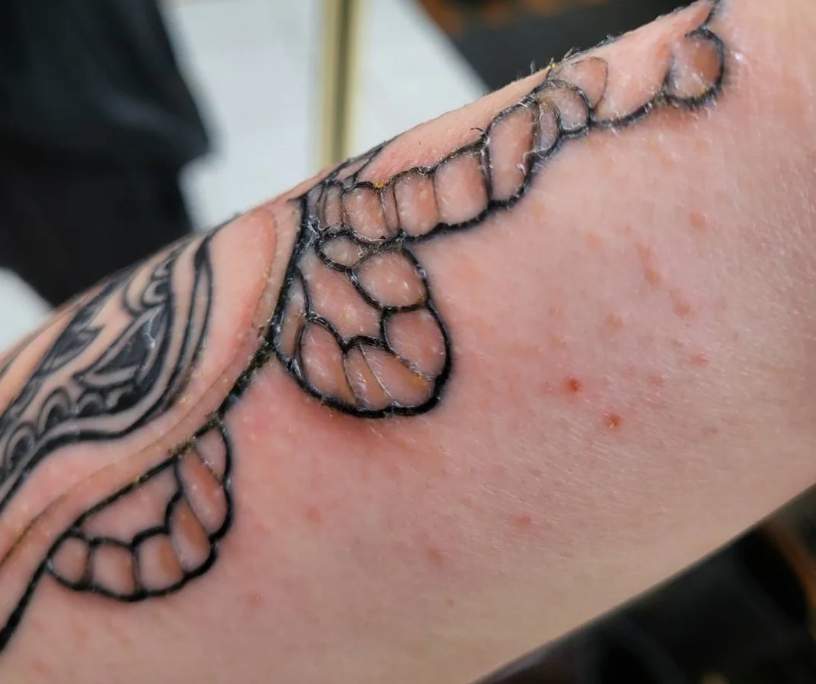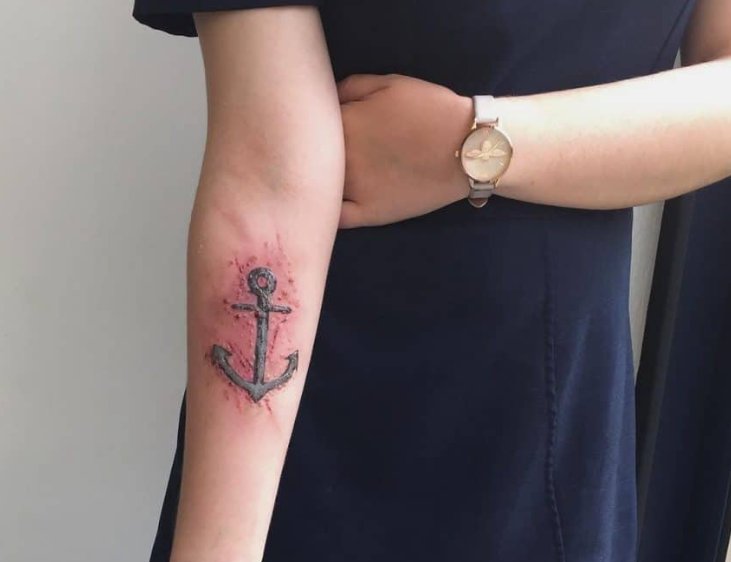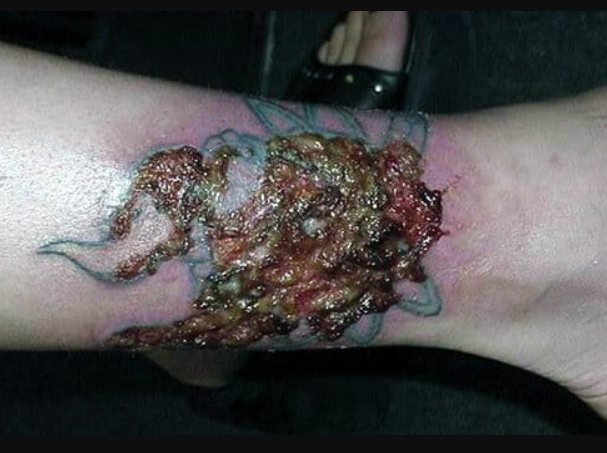A person may feel some discomfort, redness, and swelling after receiving a tattoo in an art studio from a certified, respectable tattoo artist. You may experience itching as the tattoo heals. Most fresh tattoos heal in a few weeks with proper care and sanitation, but some people get infections that need to be treated by a doctor.
These phases can give you a better idea of how the infection will develop over time, even if they are not officially recognized by medicine.
- Following a tattoo, the stages linked to skin infections are as follows:
Stage 1: The area becomes tender and there is dull discomfort.
There will be pain in that area and the tattoos will hurt, but if the pain gets worse rather than better and becomes sharp, intense, or burning, or if it hurts to touch the tattoo a week to ten days after it was done, this could indicate the first stage of infection.
Stage 2: There is redness, warmth, and swelling.
Most tattoos are red and swollen immediately after the process; however, if the redness doesn’t go away after a week, you can have an infection. Swelling and warmth are possible even in the absence of an infection. However, it is an infection if it worsens or lasts more than three days. You guessed it: Consult a physician.
Stage 3: Over hours or even days, the first symptoms get worse, and the redness gets bigger.
In this stage, it will indicate that the bacteria are spreading and making it worsen. The area will become more tender and painful, and the redness will be more complicated. Do not delay and immediately consult with a doctor as soon as possible.
Stage 4: Tiny pimples or bumps start to appear and occasionally burst, producing pus.
The most definitive indicator that your tattoo is infected is pus leaking from the tattoo site. Granulomas, or firm pimples, could indicate a particular kind of color allergy. An allergy to the pigments used in your tattoo could potentially cause an uncomfortable rash (red dyes are particularly frequent in this regard).
Stage 5: Cardiac problems may sometimes happen.
The blood-borne bacteria from tattoos have the potential to infect heart valves and cause cardiac insufficiency. Bacterial infections must be treated quickly and effectively. Treatment should begin as soon as the pathogenic bacterium is isolated, which also necessitates the ink’s development. Many times, people overlook the necessity of tracking the infection’s path back to its source. Preventing the spread of the infection to other instances is another aspect of proper treatment. This is one of the worst stages!
Stage 6: The infection has entered the body and is causing fever, chills, sweat, and shaking.
The symptoms of skin infections can resemble those of any other type of infection. Fever is one of the typical symptoms. When you’re recovering from an ailment, such as an infection, your body temperature will increase. As a result, you may feel heated. the body’s method of raising body temperature by quickly tightening and relaxing the muscles.
If antibiotic treatment is not administered and is not effective in the specific situation, bacteria may enter the bloodstream and produce sepsis, which is characterized by a high fever, poor general condition, affliction, impairment of key organs, and finally death.
Tattoo Infection Treatment
First, the treatment must be done by a doctor. A doctor must identify the type of bacteria causing a tattoo infection before treating it. Antibiotics will be administered if the infection is being caused by bacteria.
The extent of the illness and the location of its infection within the body will determine the length and potency of the antibiotic.
We also suggest that you stop applying ointment immediately and wash your tattoo with antibacterial soap three times a day if you catch the infection quickly and it stays mild. Then, without applying any creams or ointments, you should let it “dry and heal.
But besides that, we can have some home remedies like
| Aloe vera gel | Tea tree oil |
| Raw Honey | Warm compress |
| Coconut oil | Turmeric Paste |
| Witch Hazel | Neem Oil |
When to See a doctor?
The patient should consult a physician if the infection symptoms are more severe or chronic. Antibiotics may be required for several months in certain cases. They also say that because tattoo ink is permanent, indications of an allergic response might not go away.
A physician could accomplish one or more of the following:
What could be the worst case of tattoos?
It was once known that illnesses acquired by tattoos may be fatal to the person who had them. Because of this, the French Marines prohibited the tattooing of their fellow sailors as they were aware of amputations and casualties among them. But the US does accept some for their marines. Tattoo-related deaths are rare, but it could happen. As was already mentioned, the risk could change over time and suddenly materialize. Nowadays, tetanus infections are quite uncommon, and most people have received vaccinations.
Most allergic reactions to tattoos are not life-threatening or shortening unless they are severe, necrotizing, or connected to autoimmunity that affects normal tissues.
Pain, epilepsy, cardiac malfunction, or arrest can all potentially cause syncope during a tattoo; as such, the tattoo artist needs to be aware of this risk and avoid tattooing people who are predisposed to it.
Doctors Special Suggestion for Tattoo Artists to Prevent Allergic Reaction!
An allergy to latex protein relates to a unique and uncommon danger. As soon as the tattoo artist’s gloves include latex particles, the already-sensitized client may have anaphylactic shock. When getting a tattoo, a customer may be exposed to many latex particles from the gloves, which can cause allergic sensitization. This could lead to an unexpected and severe allergic reaction that could potentially be life-threatening, known as anaphylaxis. Certain fruits and latex might react adversely, resulting in anaphylaxis.
In addition, tattoo artists may develop delayed-type allergies from latex gloves, which can lead to hand rashes.
Related Article: 5 Common Signs to Spot Your Tattoo Infection Easily

My name is James Dalton specialize in developing research-based content on the fashion & lifestyle industry. And has good experience in tattooing. Tattooing is my hobby and worked for some years as a tattoo artist.



